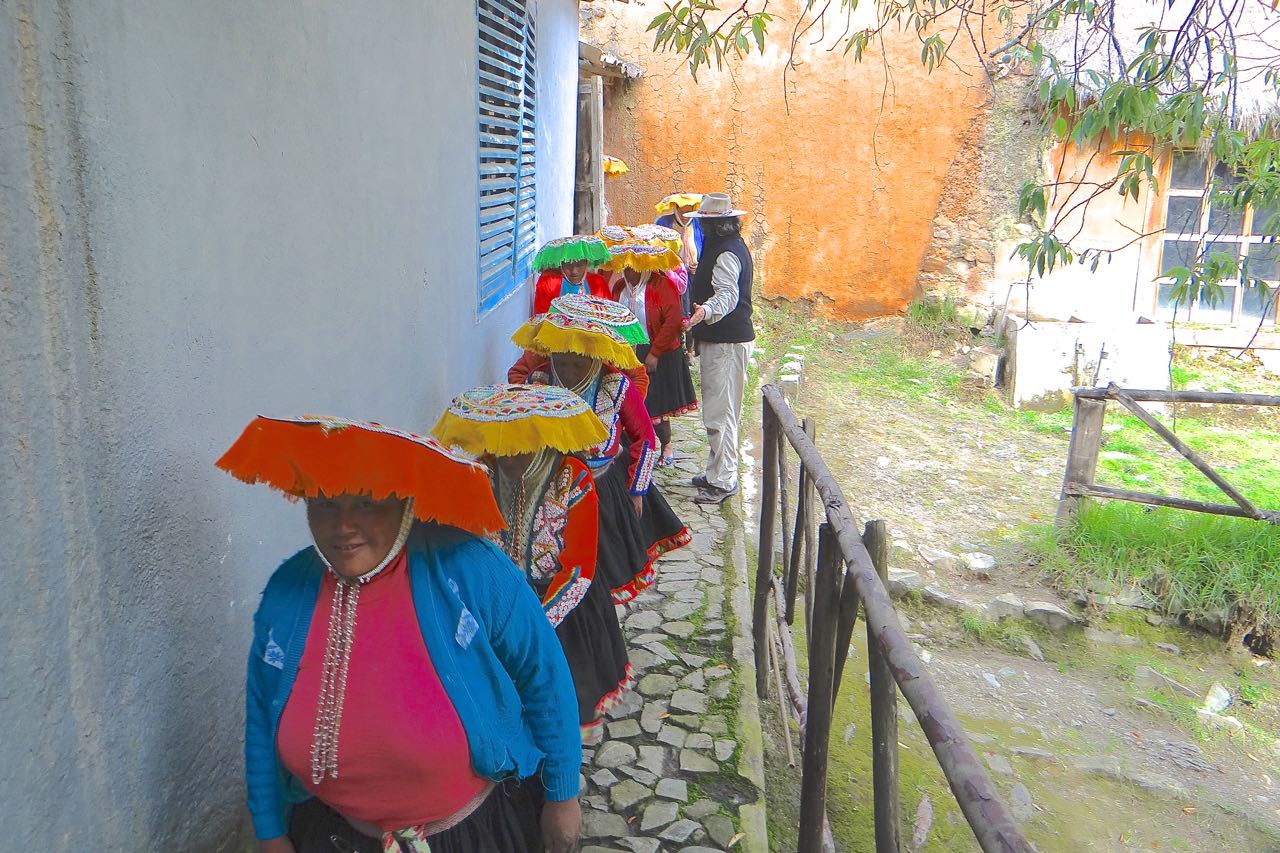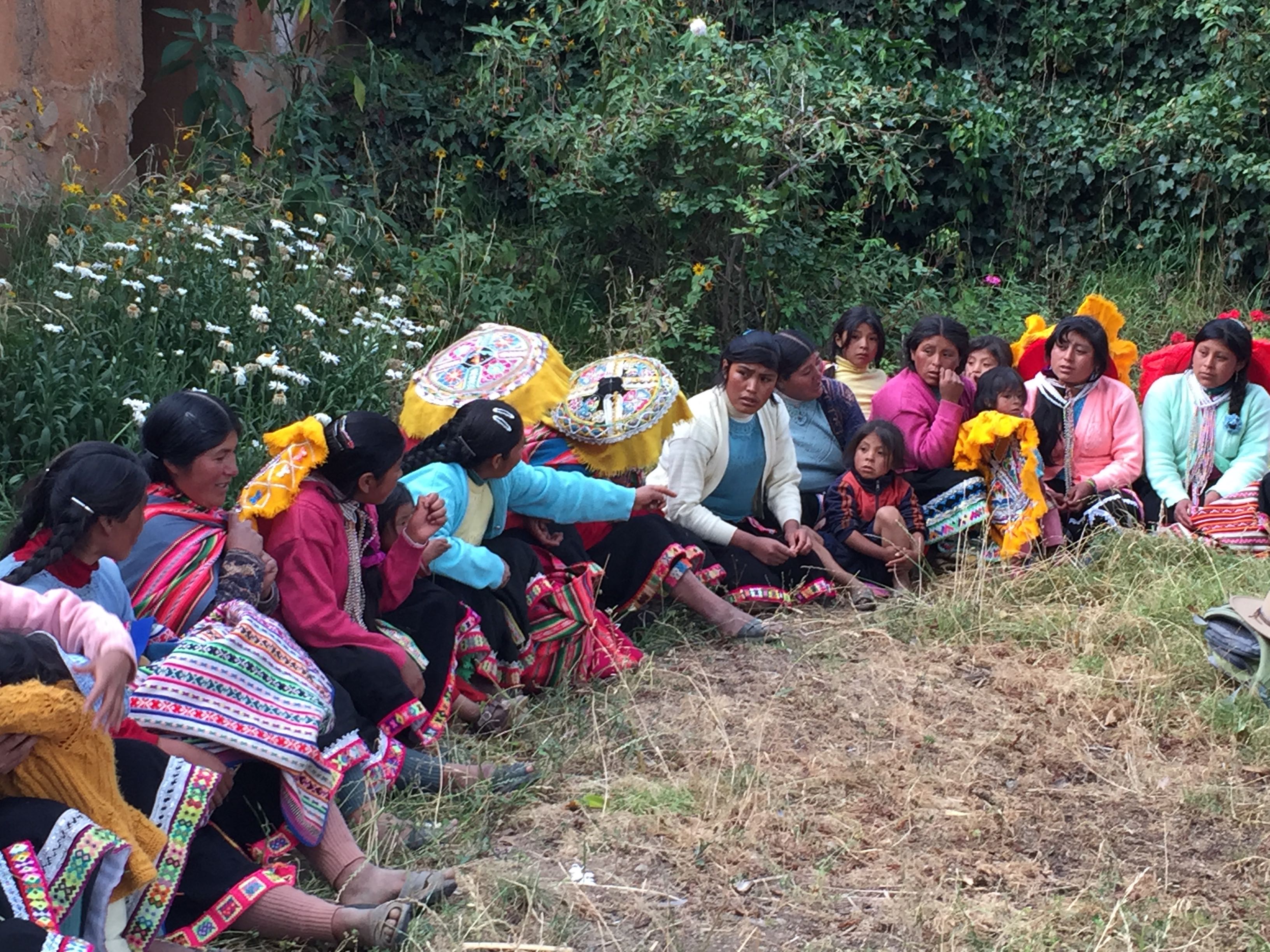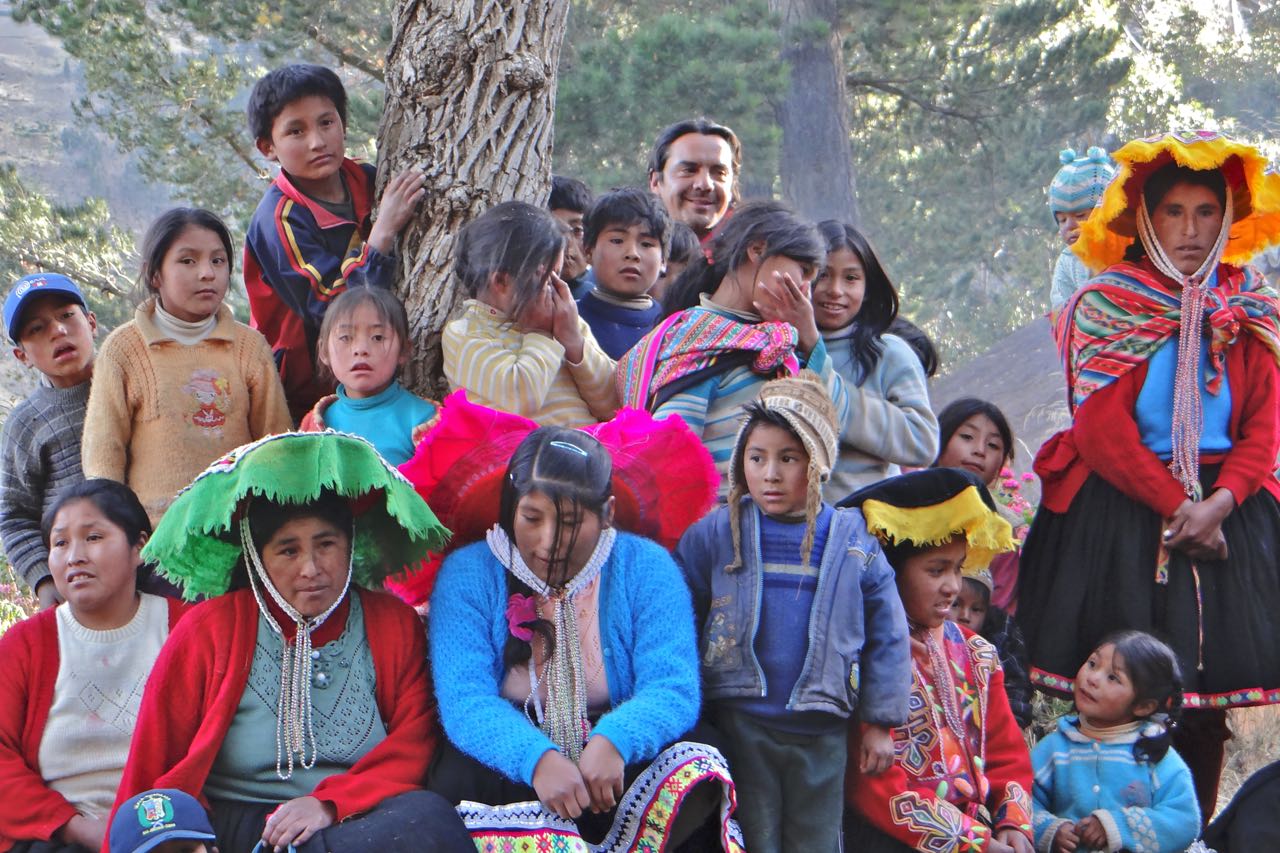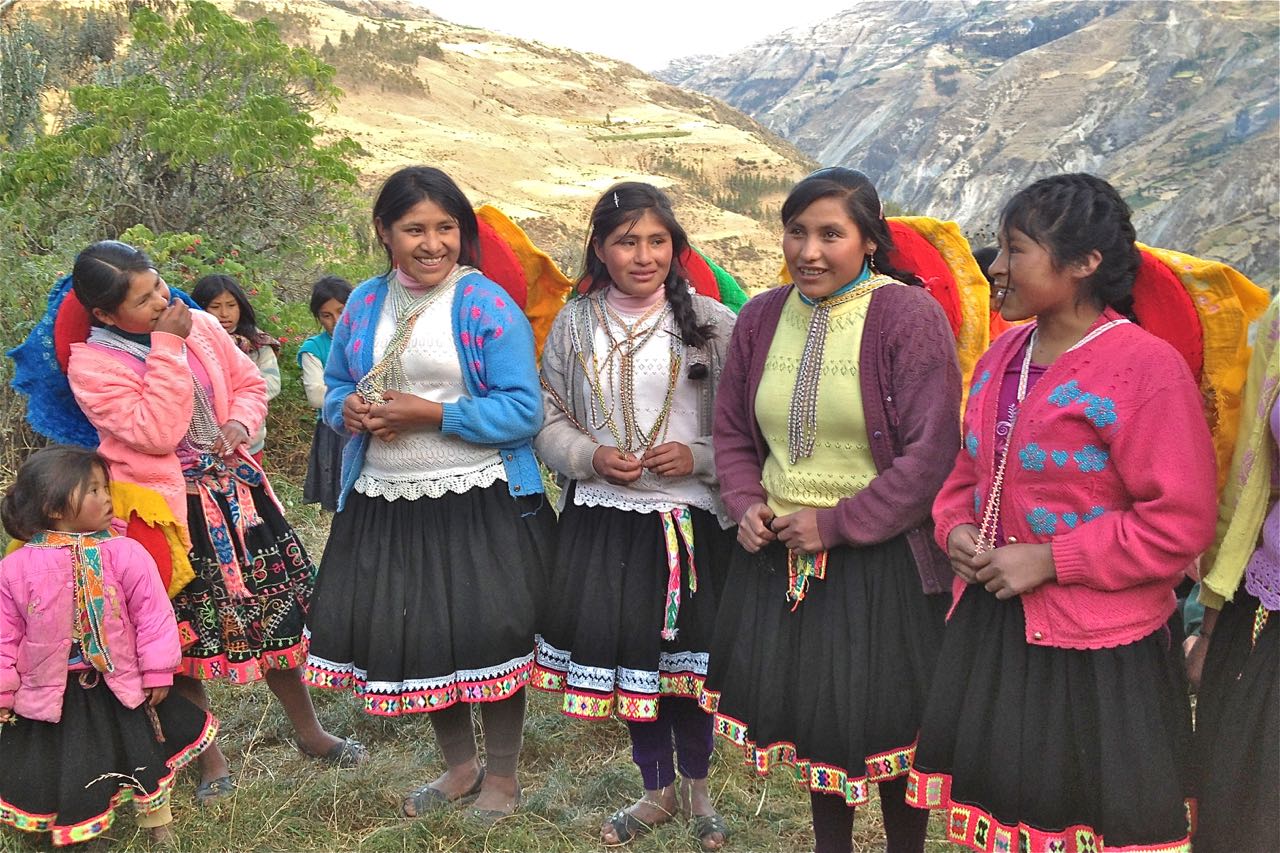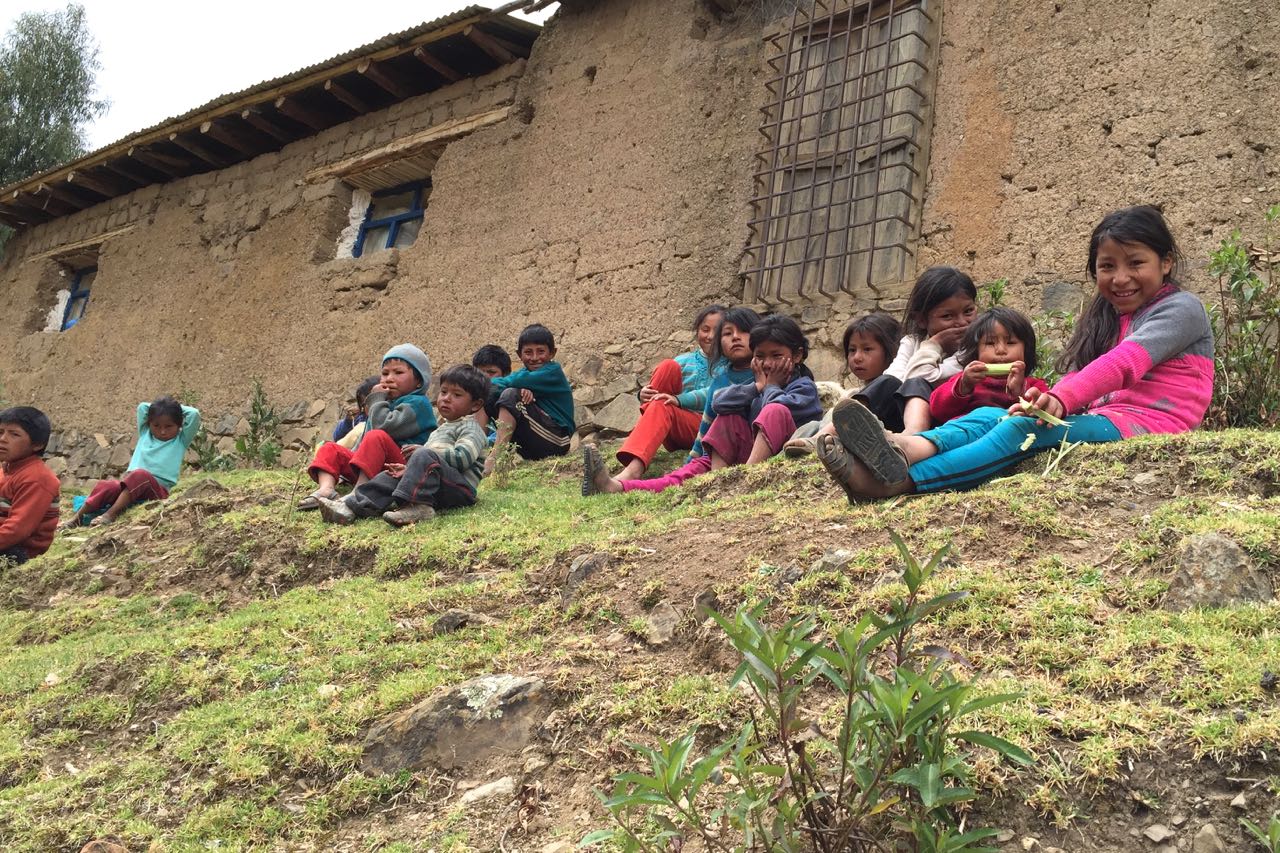Warning: my story of Ccochamocco has come unstuck in time (apologies to Kurt Vonnegut). Note that I have also added a glossary to the blog, it is available through the menu on the right side of the page.
In the year 2000, Américo and Gayle Yábar took a few friends and me to the Q’ero village of Ccochamocco (also spelled Qochamoqo) in the high Andes of Peru. It was such a remote place. First, of course, we had to get to Cusco, which itself seems pretty remote, located at 11,000 feet and 4,500 miles from my home. From Cusco we drove on a dirt road for several hours, winding higher up into the Andes to get as close to the village as we could by road. We set up camp by the road, and then the next morning we mounted horses and rode for two days, over two 17,000 foot passes, to reach Ccochamocco, itself located at 15,000 feet. In Ccochamocco we met the villagers, engaged in sacred ceremony with the paq’os, and connected with the energy of Apu Wamanlipa. It was one of the great adventures of my life.
I have recently been informed that Ccochamocco can now be reached by road. It feels to me like the end of an era. There are some stories and photos I would like very much to share.
I would like to begin 16 years ago.

Bob Pasternak (left) and me (right) at the camp along the road.

The next morning we began our two-day ride to the village.

This was taken from the first summit at 17,000 feet, looking back at Apu Ausangate.
We set up camp in a valley between the two summits. As we sat around relaxing after a long day of riding horses, Américo casually mentioned that he had not notified the people of Ccochamocco that we were coming, and that he could not guarantee our reception. He added, however, that this should not be a problem as he had been visiting the village for over 20 years, and they knew that he would only bring visitors who had open hearts.

This photo was taken shortly after don Américo pointed out to us that the Q’ero always sit huddled together to share body warmth. We introduced them to the ‘Choo Choo’ formation.

Don Bonito (left) and don Pascual (center). Don Pascual was probably in his 70’s at this point, still walking to and from Q’ero. He was a cherished part of my trips to Peru. Don Américo described him as “The Merlin of the Andes”. Don Pascual died a few years ago.

Don Américo Yábar

The photo above was taken just past the second summit. Don Domingo (now deceased) is in the foreground, Apu Wamanlipa (the primary Apu of Ccochamocco) is in the background.

Coming down from the summit to the village (Bob Pasternak in foreground). In addition to our own food and equipment we brought supplies as a gift for the village.

The village of Ccochamocco, at 15,000 feet.
We arrived in Ccochamocco in the afternoon of the second day. We set up camp in an alpaca corral on the other side of a small hill from the village. I walked up the hill to take the photo.

Don Favion (center) and don Pascual (to his left…our right).
A delegation of village elders came out to meet us, including don Favion. We were very lucky (if indeed it was luck) that don Favion was visiting Ccochamocco. He was a very renowned paq’o and he agreed to lead our ceremony. Don Favion died a month after we were there.
This meeting was not a social event. A very important part of the Andean Cosmovision is the process of people harmonizing their different energies. It is a test of the compatibility of people’s energies. With the Q’ero, as far as I can tell, this involves my willingness to open my munay (my heart energy). I love being with people where their acceptance of me is based upon my willingness to open my heart. It is what makes coming back to the United States, and academia, so difficult for me at times. My society seems so cold and distant by comparison.
Four years earlier, in my first trip to Peru, my first formal meeting with the paq’os from Q’ero took place in a forested mountainside outside of Cusco, at dusk. We were sitting in a circle in a small clearing. We each were given an opportunity to say something. I didn’t know what to say so I just described my experience at the moment. I said that I could feel the energy of my heart expanding in their presence. They responded, “yes, we are watching that”.
They were all sitting with their mesas spread out in front of them. After much internal debate I took out my red cowboy bandana and spread it out on the ground in front of me and put a quya on it that had been given to me by don Américo. I wanted to honor them by joining them in this, but I didn’t know if it would be taken as such or if they would be insulted, and I really cared about how they would feel about it. I finally sucked up my courage and did it. I asked don Americo about it afterwards. He said that for 500 years (ever since the Spanish conquest) the Q’ero had remained purposely isolated from a Western society that belittled everything the Q’ero cared about. They knew that I had traveled a far, far distance to be with them, and I had a mesa. He looked at me with kind eyes and smiled. It was evening by the time our meeting was over, and we made our way in silence down the mountainside, through the darkness, under the trees, a Q’ero holding each us each by the hand to guide us down safely.
Back to Ccochamocco. After the delegation left it was getting late and Américo told us that our meeting with the rest of the villagers would take place the next day.
The following morning I awoke early and sat on a rock in the morning sun writing in my journal and drinking coffee. Then occurred one of the most meaningful moments of my life. I can’t really describe why it was so meaningful, I can only describe what happened, perhaps you will understand.

I looked up from my journal and was surprised to see a young girl standing there, just a few feet away, looking at me. She had walked over from the village to check us out. At that moment my friend Sally leaned out of her tent and took this picture.
The little girl was pure salka. I didn’t speak quechua and she didn’t speak English. I am a father, however, and I know how to communicate my heart to children. I remarked on her pretty necklace and her beads, I told her how happy I was to see her.

She cuddled up next to me, and together, in salka, we watched the morning unfold.
Much later I gave a report on the trip to my department at the university. When I told this story one faculty member said, “Sounds like a special moment for you Oakley, but did anything important happen during the trip?” Two worlds. I live in them both. I endeavor to be a bridge.
Don Américo wasn’t around that morning. When he returned he explained that he had been with don Favion. Even though, I believe, they knew each other quite well, as part of the process don Favion had to demonstrate to Américo that he had the power to initiate us, and don Américo had to formally take responsibility for us being ready for the ceremony (there would be energetic consequences to him if we weren’t). He did not elaborate on what these processes and consequences entailed.
Before we could have a sacred ceremony with the villagers we needed to meet with them. It was necessary for all concerned to see if we could mesh our munay (heart) energy in a harmonious way, for only then could we travel on together.

Gathering with the villagers.

The meeting was beautiful.

Gayle’s friend ‘Rojo’ (back left) and don Américo (back right).
Later that day we walked part way up Apu Wamanlipa to a natural stone circle at its base, to have our ceremony. We were welcome to take pictures but I wanted to be fully immersed in the experience rather than documenting it, so I only have photos of us going up Apu Wamanlipa to the ceremony and coming back.

Heading up Apu Wamanlipa. Clouds born far, far below in the jungle are working their way up the valley.

Walking back from the ceremony through the clouds.
The next day we began our two day trek back to the road.

Breakfast on the second morning of our journey back. The ambiance is great but it is hard to get reservations.
When I first met don Américo in the 1990’s the Q’ero would walk for five days through the mountains from their villages to Cusco to sell their goods and to purchase what the villages could not make themselves (sugar, candles, matches, etc.). Which reminds me of a story told to me by Tom Best.
Tom was with Américo when he made a phone call from the U.S. to his daughter Arilu in Cusco. Américo asked after the Q’ero who were in Cusco at that time and then exclaimed “Don _____, I though he left for Q’ero four days ago!”. After the phone call was over Américo explained that don ______ had walked two days back towards Q’ero when he realized that he had left his wristwatch at don Américo’s house. So he turned around and walked back to get it. Américo then laughed and said that the watch doesn’t even work. I have to admire a life where that decision makes as much sense as any other.
I asked Américo about that story later. He added another piece to it. Américo and Gayle caught a ride in the back of a pickup truck up to an isolated pass in the Andes where they were to meet the Q’ero at a specified time. They hopped off the truck and looked around, no Q’ero. They waited for quite a while and finally decided they had better start walking back. After an hour or two of walking down the road they passed a stone hut, and went in for shelter. There were the Q’ero. Américo spoke to don ______ saying “where were you, you were suppose to meet us at the pass hours ago?” Don ______ looked at his (broken) watch and replied, “No, we are right on time!”
The indigenous people, like the Q’ero, who live in remote villages, who still live a life informed by the Andean Cosmovision, and are identifiable by their traditional clothing, reside in the lowest level of the strict Peruvian social structure. In Cusco, teenagers jump out of pickup trucks and beat them up. They are often denied entry to hotels and restaurants. If they are allowed into a restaurant they may receive very poor service and noticeably inferior food. It is one of the few times I have heard of Américo getting seriously angry, when he stormed into a kitchen after the Q’ero were served soup with no meat or vegetables. When we are in the outback of Peru, Gayle and Américo will usually take over the task of being the waiters to the Q’ero, making sure they are treated with respect and get the same quality food as the rest of us
When I first met Américo his friends from Q’ero would stay at his house when they visited Cusco. When that finally got to be too big of a burden for his wife, Américo arranged for a safe house in Cusco where the Q’ero could stay for free, and a restaurant where they could eat. If the Q’ero left a thumbprint on the receipt Américo would pay it.
There are many paths into the Andean Cosmovision, some are paths of power and some are paths of heart. As a personal predilection I have been drawn to the path exemplified by don Américo and don Gayle, which is a path of heart. On this path power is not the goal; instead, wisdom, beauty, and power arise as a byproduct of being in right relationship with Nature and the Cosmos. These relationships are guided by munay and fueled by ayni.
In 2014, I sponsored a workshop by Américo here in Utah. When Américo arrived he told me that before he left Peru he met with a group of Andean women. When he told them that he was going to the United States, and that he would be seeing me, they all removed their necklaces and gave them to him to give to me. I was stunned and moved to tears when he told me this. Later that morning we were all sitting together in the workshop and a thought arose from deep inside (where I believe we are connected to the Cosmos) and I did one of those rare perfect things at the perfect time. I told the participants the story about the necklaces, and then gave one to each person there. I said that this path was not about us, it is about Us; you, and me, and Pachamama, and the trees, and the rivers, and the stars, and the people of Peru. At that moment, as I passed on the necklaces, I was a station on the circle of ayni. The path is about munay and ayni and circles of relationships, relationships with organic beings and inorganic beings. This is a dance that is way beyond the realm of the intellect and its ego.
I know of two organizations that are helping the Q’ero achieve the higher quality of life they desire from their increased interactions with the West, while validating the beauty and importance of their worldview and nourishing its continuance, I recommend them both to you; they are Kenosis Spirit Keepers (of which I am the vice president) and the Heart Walk Foundation. They approach this mission from somewhat different directions, if you are interested please check them both out. From my munay. Oakley
Share... 























